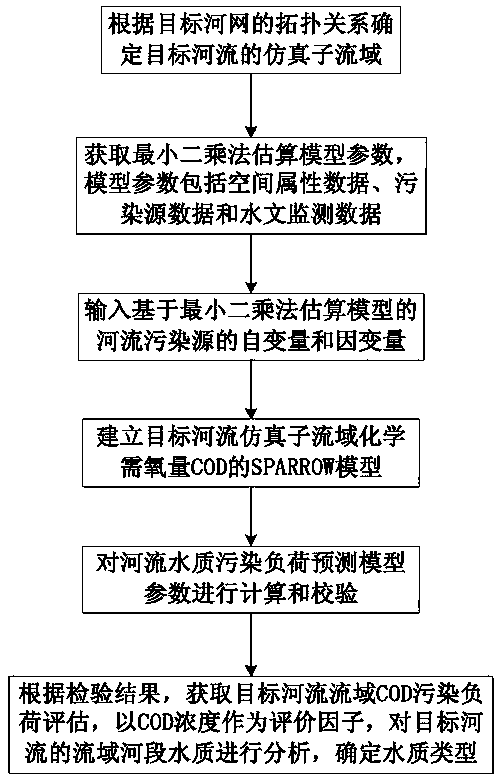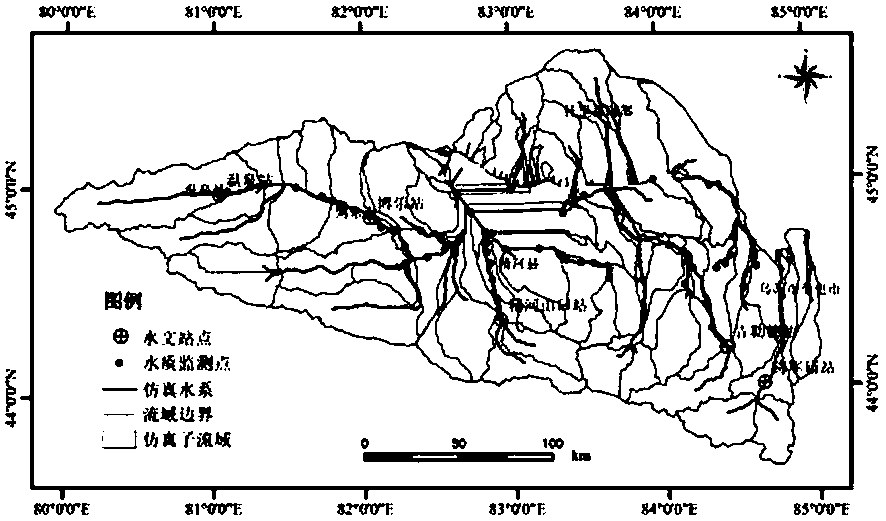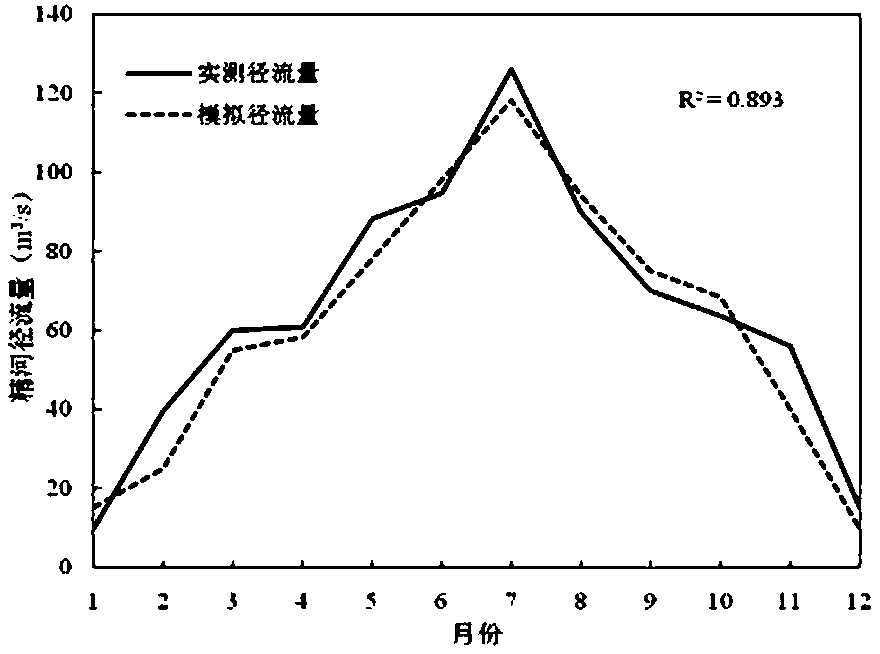River pollution assessment method based on SPARROW model
A river pollution and river technology, which is applied in the field of river pollution assessment based on the SPARROW model, can solve the problems of quantitative distribution division assessment, difficulties in river pollution control, and inability to control polluted rivers in a targeted manner.
- Summary
- Abstract
- Description
- Claims
- Application Information
AI Technical Summary
Problems solved by technology
Method used
Image
Examples
Embodiment 1
[0039] Embodiment 1: as attached figure 1 As shown, the river pollution assessment method based on the SPARROW model includes the following steps:
[0040] The first step is to determine the simulated sub-basin of the target river according to the topological relationship of the target river network. Based on the digital elevation model data of the sub-basin of the target river, use the ArcHydro tool set to follow the steps of depression filling, flow direction analysis, catchment calculation, river network definition and Segmentation and basin vectorization to obtain simulated river network hydrological data;
[0041] The above-mentioned simulated river network data is extracted from the DEM data by using the ArcHydro tool set in the Arcgis software to extract the main river systems in the basin. Based on Arcgis10.1 and ArcHydro, the above-mentioned basic data of the target river basin are processed and analyzed to obtain the simulated river network hydrology of the basin. d...
Embodiment 2
[0064] Embodiment 2: as figure 2 , 3 As shown, taking Xinjiang's largest inland saline Lake Aibi Basin as the water quality assessment object, the geographical location of the Aibi Lake Basin is between 43°38′-45°52′N and 79°53′-85°02′E In the basin, there are 7 rivers including Kuitun River, Sikeshu River, Guertu River, Jing River, Achale River, Dahe Yanzi River and Bortala River. The entire basin area is 50621km 2 . The basin is surrounded by mountains on three sides in the west, south and north, with a valley plain in the middle, and Lake Aibi in the east. The annual average precipitation in the lake area is less than 100mm, while the mountain area has relatively more precipitation, which is the main water supply area for the lake area. Based on the SPARROW model, the Aibi Lake Pollution assessment methods for the Bihu Basin, including the following:
[0065] (1) Based on Arcgis10.1, ArcHydro and NANI software, the basic data of Lake Aibi Basin are processed and analyze...
PUM
 Login to View More
Login to View More Abstract
Description
Claims
Application Information
 Login to View More
Login to View More - R&D
- Intellectual Property
- Life Sciences
- Materials
- Tech Scout
- Unparalleled Data Quality
- Higher Quality Content
- 60% Fewer Hallucinations
Browse by: Latest US Patents, China's latest patents, Technical Efficacy Thesaurus, Application Domain, Technology Topic, Popular Technical Reports.
© 2025 PatSnap. All rights reserved.Legal|Privacy policy|Modern Slavery Act Transparency Statement|Sitemap|About US| Contact US: help@patsnap.com



